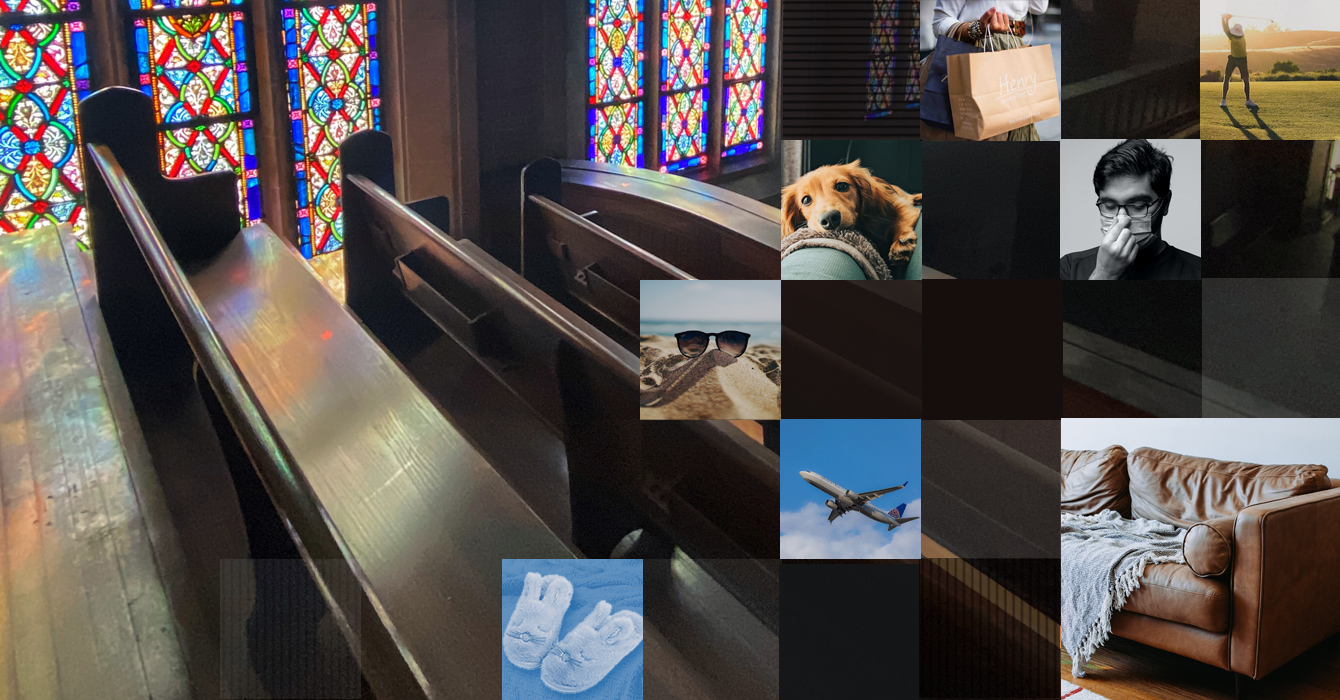It dawned on the Rev. Sarah Taylor Peck in fall 2019 that she’d shared a pastoral moment with every household in her Disciples of Christ congregation. As the senior minister at North Canton Community Christian Church for nearly six years, she had officiated at their weddings, taught their children and helped bury their loved ones.
Nearly 200 worshippers showed up weekly for the Sunday morning service, and she had forged deep, meaningful relationships with each one of them. Taylor Peck felt genuinely honored to be part of the community they’d built together.
Then the pandemic struck, closing the Ohio church’s doors and forcing their fellowship into the ether. The congregation reopened for good during Lent 2021, but not everyone has returned for in-person worship. Coming to church each Sunday takes discipline, Taylor Peck said, and like a muscle that goes unused, it atrophies over time.
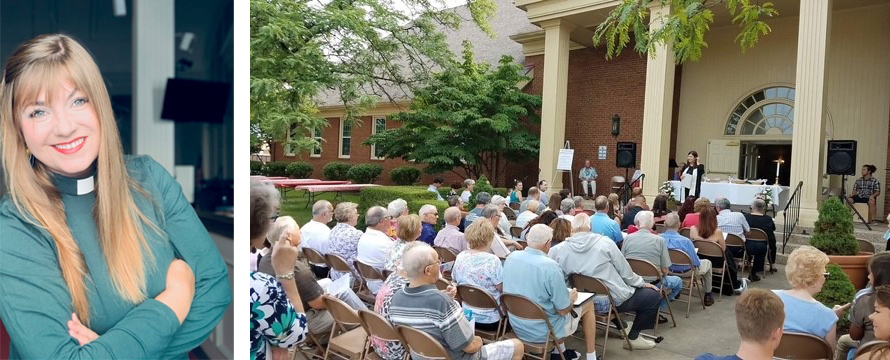
“I’m still in a season of lament about the way the pandemic contracted congregations and congregational ministry,” she said shortly before Christmas. “It really broke the tether we had to our members.”
All is not lost for North Canton Community CC. While Sunday in-person attendance is down about 30% since before the pandemic, nearly two dozen new people joined the church in September, the largest single class of new members since Taylor Peck arrived in January 2014, the pastor said. She is profoundly grateful for their enthusiasm and this opportunity to rebuild the church’s community “bit by bit, moment by moment, sacrament by sacrament.”
But she also misses the families who have yet to return and isn’t entirely sure what, if anything, she can do to convince them to come back. One day, Taylor Peck dropped by the home of a longtime church member who hadn’t returned to in-person worship. Bearing flowers from the altar, she told the 82-year-old that she missed him, that his church needed him and that she hoped he’d come back. His response: he simply wasn’t getting dressed in the mornings anymore.
There are plenty of others just like him, Taylor Peck said. They didn’t leave in a huff; they simply altered their routines during the pandemic, and in-person church attendance isn’t the priority it once was.
“They didn’t get mad at our policies and stomp away. They’re just not coming,” Taylor Peck said. “I almost prefer a fight. There’s emotion and commitment in a fight. But this is just apathy. It’s less vigor for church.
“We can’t tempt them or bait them or inspire them to come. We have to wait patiently. So we begin again.”
How have the expectations that pastors and congregations have for each other changed over the last three years?
Nearly three years after COVID-19 upended life as we know it, faith leaders like Taylor Peck are pondering how best to mourn and honor what was lost while reengaging communities that have irrevocably changed. How do you recalibrate for absences associated with deaths that couldn’t be properly grieved? How do you account for those who vanished for political reasons? And how do you build meaningful connections with virtual worshippers who might never enter the building?
“The ministry of church isn’t just about Scripture and gospel. It’s reminding people how to do life together, how to show up together,” said Taylor Peck. “I would hate for that to be lost.”
North Canton practices communion weekly. What influence do your congregation’s worship practices have on expectations for in-person attendance?
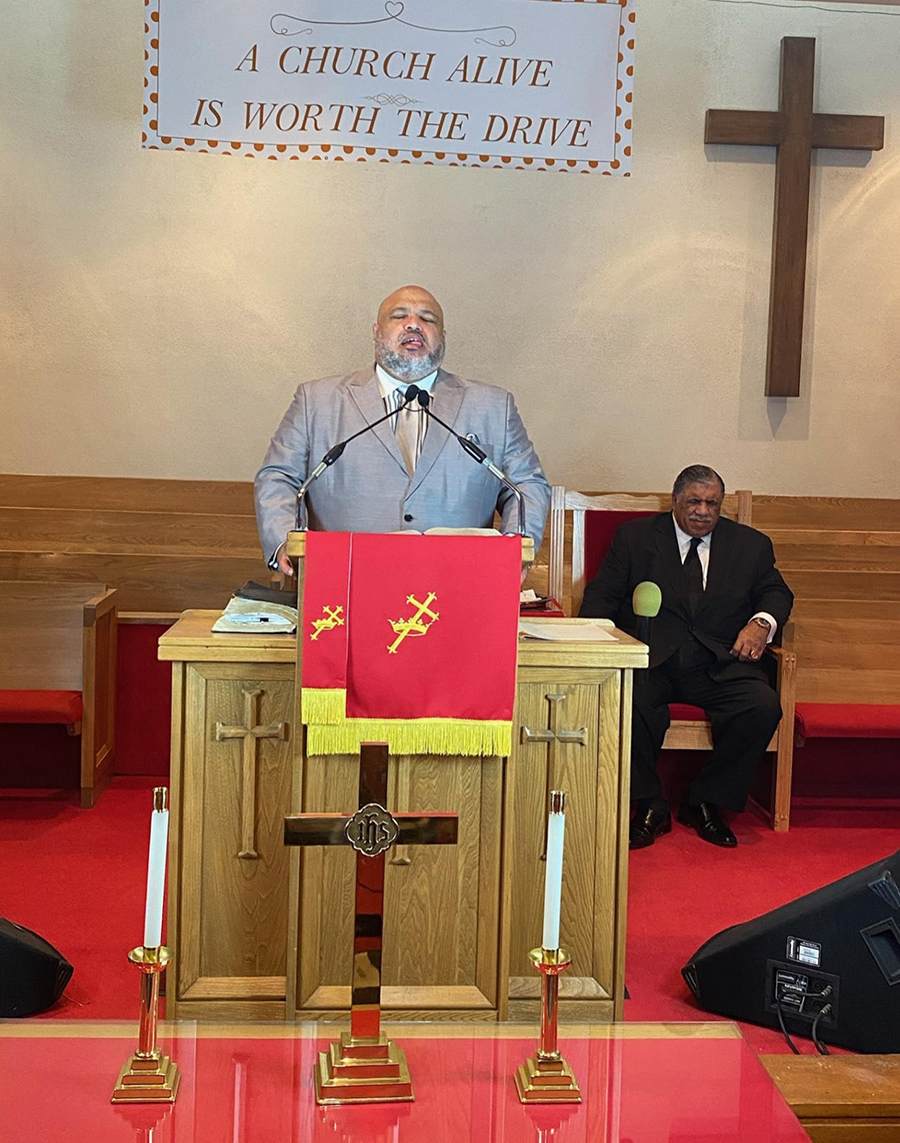
Not just COVID concerns
At Holy Trinity United Baptist Church in Washington, D.C., the pews aren’t as crowded as they once were, said the Rev. George C. Gilbert Jr., who serves as the assistant to the pastor, his father. He attributes some of those absences to lingering fear over the coronavirus, a very real concern for older parishioners, including his 75-year-old father, the church’s founder, who spent two months battling the virus.
While statistics indicate that the chances of catching the virus and dying from it have decreased considerably since the pre-vaccine days of the pandemic, “fear versus faith is still a very tense conversation” within the church, and most of the congregation’s older members remain masked and socially distanced when they attend worship, Gilbert said. Those are the stalwarts who find a way to come together despite their concerns.
It’s the younger folks who remain missing on Sundays, Gilbert said, and he’s not convinced that COVID concerns are driving that absence. He sees crowds of young people, masked and unmasked, at grocery stores, the mall and birthday parties. Between the pandemic and ongoing political strife, he said, he worries that people are leaning more toward culture and less toward the Holy Spirit.
“None of those places is lacking attendance. They all seem to be at capacity,” he said. “But when it comes to church, we have to ask ourselves, is it about commitment or is it about the virus? The world is in competition with God.”
Indeed, a recent study by the American Enterprise Institute and NORC at the University of Chicago found a drop-off in church attendance among younger churchgoers, as well as those already less connected with a faith community and those who identify as liberal.
Holy Trinity has persuaded some young people to return by giving them tasks that appeal to their skill sets, Gilbert said. Younger members helped the church choose an online giving platform, something the congregation hadn’t offered pre-pandemic. They’re running the church’s social media channels and handling the tech needed for livestreaming services. And a group of them created a praise team that sings every Sunday, partly because they’re not as anxious as some of the seniors about catching a respiratory illness, Gilbert said.
The church has also expanded its outreach, recently approaching a local homeless shelter about starting a church for its residents.
“We know folks are afraid to come out. They’re just not ready to come back to church,” he said. “So we’re trying to go to them and make Jesus as accessible to folks as possible.”
Gilbert said the empty pews weigh on him and he wonders what God is asking of him, whether there’s something else he should be doing to engage his community.
“If folks don’t come back, it’s hard for us not to see ourselves as a failure. That’s the stress of being relevant,” Gilbert said. “But God doesn’t call us to be relevant. He just asks us to be faithful.”
What worries you about the shift in patterns of attendance? How can you distinguish your own grief from your analysis of the situation?
The Rev. Dr. Rolando Aguirre started as an associate pastor at Dallas’ Park Cities Baptist Church the first weekend in March 2020. His work, focused on teaching and Spanish language ministries, began just as the world was beginning to shut down. The ensuing months were marked by resetting, relaunching and, ultimately, reopening.
Aguirre said the majority of the people he expected to serve have not yet returned to church, and he suspects many have relocated. But new people are coming, and Park Cities is responding to possibilities that the pandemic surfaced. Lay leaders have engaged more actively in reaching out to members.
“The fellowship of deacons were more active in saying, ‘Let’s help call the people. Let’s encourage them to come back. Let’s visit them.’ So last year was a lot of the leadership base [responding] to engage with the congregants,” Aguirre said.
They are also addressing needs that emerged – offering monthly Spanish-language services at additional sites, and responding to a desire for more youth programming and a need for mental health support.
A congregational survey along with group and individuals interviews helped “to really recapture, recalibrate our vision,” he said.
Sampling online services
At Pelion United Methodist Church in South Carolina, Sunday attendance is down a bit from before the pandemic. The Rev. Ed Stallworth attributes some of the loss in his congregation to Christianity being politicized.
“That’s become a bigger disease than the pandemic,” said Stallworth, who became the pastor at Pelion UMC and nearby Sharon Crossroads United Methodist Church in July 2021. Prior to that, he’d served at a progressive church in Spartanburg, South Carolina, and his arrival in conservative Pelion, about 20 miles outside the state capital of Columbia, made more than a few worshippers nervous, he said.
One of the first questions he was asked was whether he’d “force” worshippers to wear masks. He responded that he couldn’t force anyone to do anything but that he and his family would mask up to keep everyone safe. And he’s openly encouraged members to get vaccinated.
Some ultimately left over political differences, Stallworth said. But he’s encouraged those who remain to embrace the church’s growing diversity and learn to worship alongside people who don’t necessarily share the same opinions.
“I said, ‘We may disagree, but just know that I’m going to love you through everything,’” Stallworth said. “And they took hold of that. I think that’s how we got through this pandemic and how we’re going to move forward together.”
Both churches developed a virtual worship option, said Stallworth. While serving his church in Spartanburg, Stallworth broadcast a 30-minute service on Facebook, using his cellphone and laptop, with accompaniment from the church’s organist. Some days, he misses the solitude of that effort, so he understands why some of Pelion’s members still prefer to worship from home.
Most of the worshippers now attending in person are new, having sampled the church’s services online before ever coming into the building, he said. And the majority of them were previously unchurched, he said. Many of the newer members are young people with children who were introduced to Pelion UMC through its outreach programs, like Trunk or Treat or its school backpack program.
“They just want to be part of a community that’s bigger than them. I think they just want a sense of, ‘We’re going to be OK,’” he said. “Contrary to what a lot of people are saying, I believe better days are ahead for the church. It might look different, … but particularly for progressive congregations, from these ashes something beautiful is going to emerge.”
How is the work of supporting the ministries of the church changing? What are the skills and experience needed to offer ministry today?
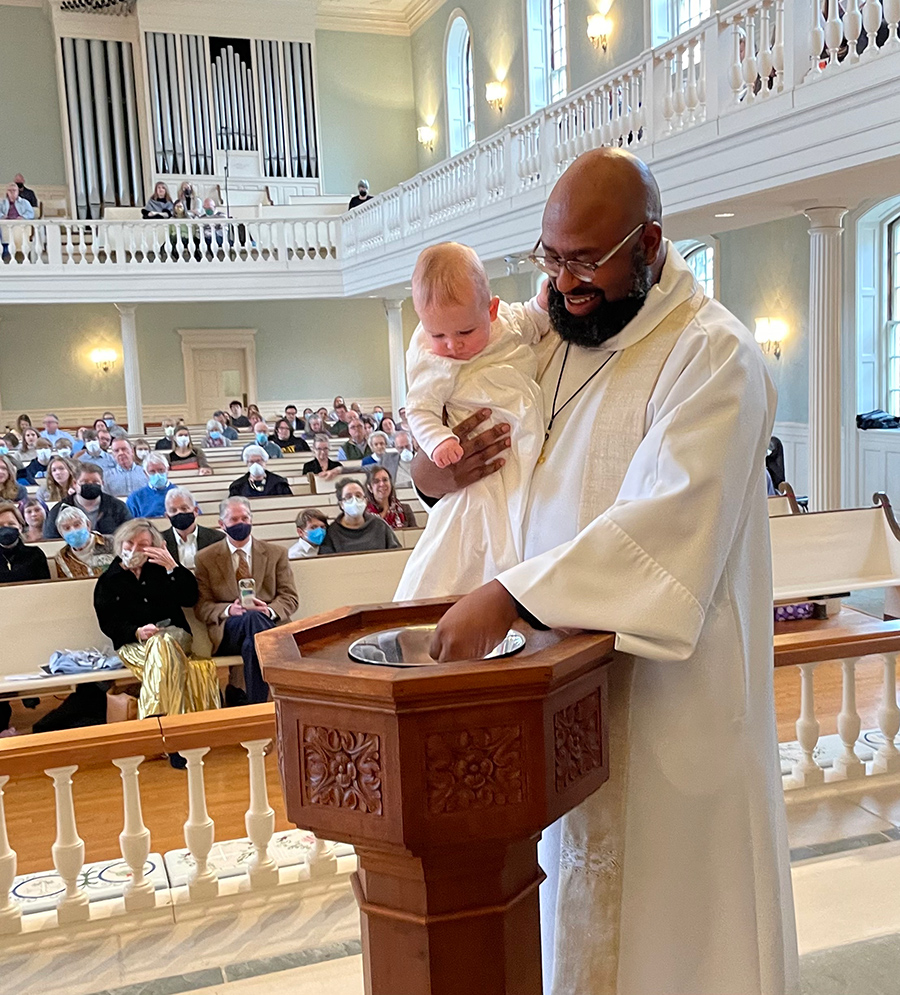
Pentecost moment
The Rev. Justin Coleman, the senior pastor at University United Methodist Church in Chapel Hill, North Carolina, also maintains a sense of optimism about the church’s future. Pre-pandemic, the church invested in a new sound system and video cameras, primarily to reach the homebound and the nearby academic community, many of whom left town during the summers but wanted to remain connected. That investment proved crucial during COVID-19 when the church moved entirely to virtual worship.
Members of the congregation who disagreed with that decision ultimately trickled away in favor of churches that either resisted shutting their doors or reopened sooner for in-person services, Coleman said. But the church has since welcomed a host of new members, many of them young families, who initially connected with the congregation online and now attend in person.
Plenty of University UMC’s members still prefer what Coleman calls “couch worship,” and he said they’ve “stopped being apologetic about it.” But he doesn’t view virtual participation as a negative.
Prior to the pandemic, some members would come to church once or twice a month but wouldn’t necessarily go online to watch a service. After the pandemic normalized remote worship, many of those folks became regular online worshippers who also tuned into Coleman’s podcasts.
“For them, they’ve increased the amount of time they’re connecting with worship or a worship-related activity,” Coleman said. “The question we’ve begun to ask now is, ‘Should we not just treat this like a proper digital campus?’ These people are worshipping at home. How do we interact with them to help them feel connected and share opportunities to serve?”
The church has considered designating a staff member as a “digital usher” during the livestreamed service and establishing a small group that meets online. Coleman acknowledged that clergy are “chock-full of nostalgia and sentimentality,” which can make it challenging to embrace the kind of radical change churches are facing post-pandemic. But churches need to stay nimble, he said, noting that the Pentecost moment is about cultural adaptability.
“That’s God saying this gospel is going to move into the culture in many ways, and what’s implicit is this is going to look different as it moves into all those places,” he said. “I would love to have multiple services filled with people who want to be there in person. On the other hand, people are connecting with us in new ways. How can we capitalize on this and reach more people in more places with the gospel because of this opportunity with technology?”
What is the ratio of in-person to virtual attendance in your congregation? What questions about the vitality of the virtual congregation are being raised for you?

New front doors and back pews
The Rev. Dr. D. Dixon Kinser, the rector at St. Paul’s Episcopal Church in Winston-Salem, North Carolina, calls the congregation’s livestreamed worship service — created in response to the pandemic — “the new front door of our church,” noting that most of its new members first participated online.
Before the pandemic, Kinser worried that online worship would be too “performative,” but he’s since come to appreciate the accessibility livestreaming offers. He said worshippers have enjoyed being able to attend services even when they’re out of town, and one member was recently able to participate in a service while hospitalized.
Though in-person attendance is down, giving has increased, he said, and some donors have maintained their membership despite moving to other states. The primary concern he has for remote worshippers is his ability to provide pastoral care for them, something he said suffered during the pandemic.
“You realize how much pastoral care happens at the church door or in passing,” Kinser said. “When you’re not seeing anybody, then not seeing anybody doesn’t tell you anything.”
St. Paul’s has online worshippers from as far away as Florida and Michigan; if they needed a hospital visit or a funeral service conducted, he’d be hard-pressed to serve them. He said denominational networks may become essential for that moving forward, such as when an Episcopal priest in New York asked him recently to deliver communion to a parishioner who had gotten sick while traveling and ended up in a Winston-Salem hospital.
How is your congregation providing care for those attending virtually?
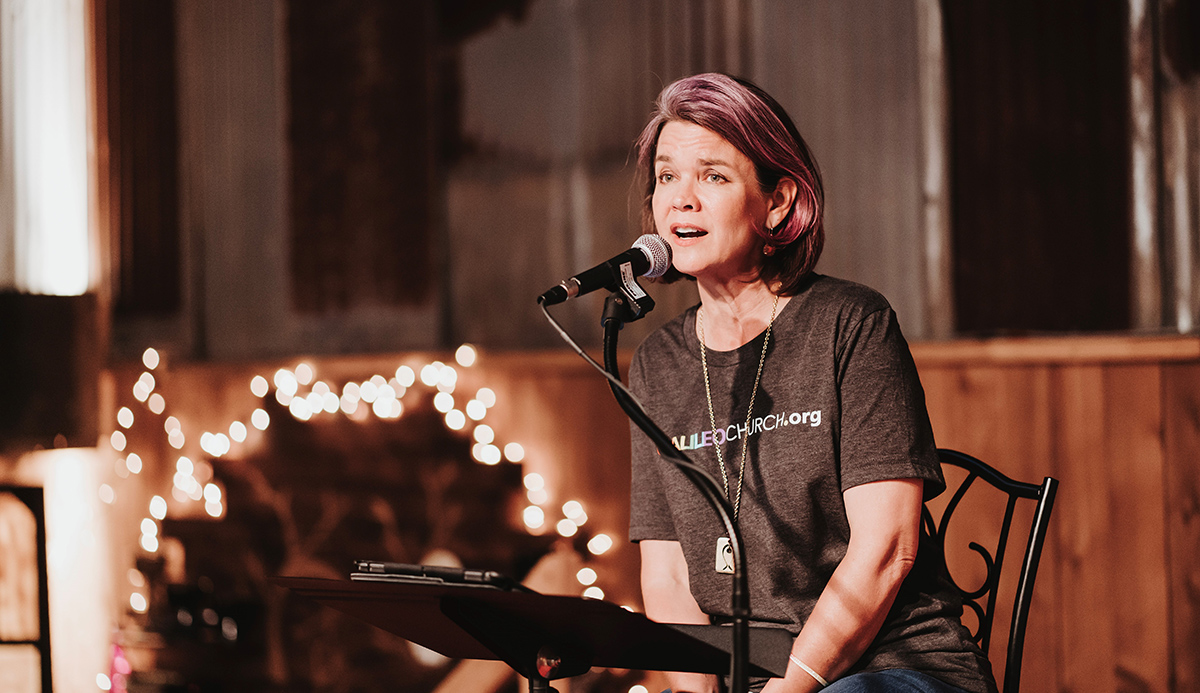
The Rev. Dr. Katie Hays, the lead evangelist at Galileo Church in Fort Worth, Texas, said she has some of those same concerns. Does the church’s budget need a line item so a pastor can fly out of town to conduct a funeral for a member who worshipped online? Should the church prepare ready-made care packages to send to faraway members who are sick or grieving? And what about baptisms?
Hays said she doesn’t yet have answers to those questions but firmly believes that remote worship is the church’s new frontier. She also admits that she was the last holdout at Galileo when it came to offering online worship. She’d seen so many churches do it badly and felt that people already had more than enough screen time, ultimately agreeing to the concept in 2019 largely because she wanted the far-flung LGBTQ community to have ready access to an affirming congregation.
What Galileo quickly discovered was that the platform also appealed to neurodiverse worshippers who might not feel comfortable in crowds, as well as to those with mobility impairments. During the pandemic, the church hired a second pastor devoted to helping virtual worshippers develop a robust online community. Hays refers to the church’s Inside Out online worship experience as the “back pew” of Galileo, the place where those hesitant to come inside can get a taste of the church’s ethos before ever crossing its threshold.
Who can participate in your congregation at a deeper level because of virtual opportunities?
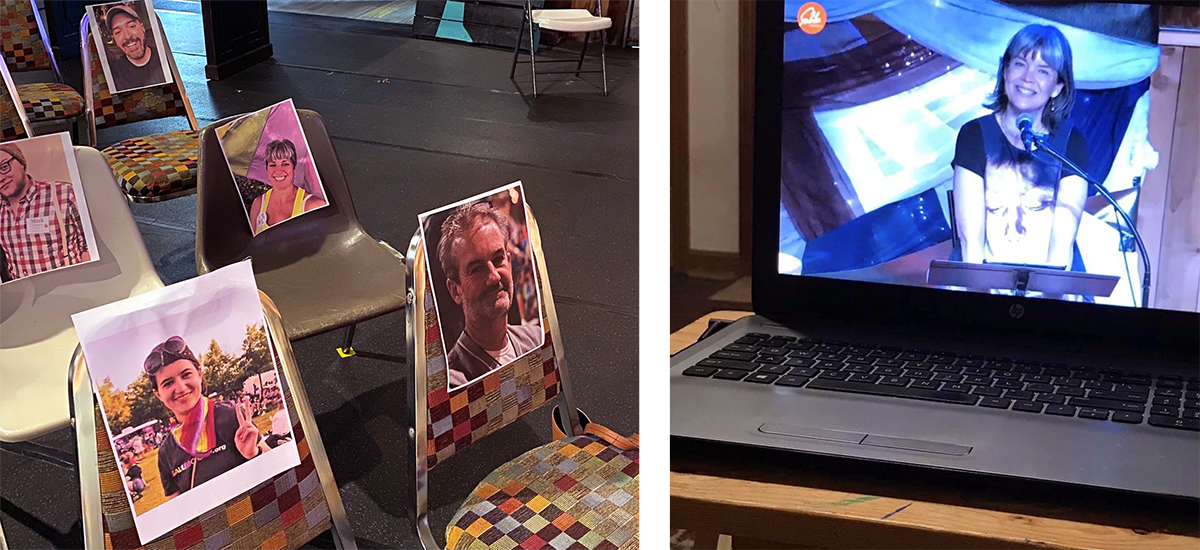
“I feel like I’m 500 years old, like I’m the priest who opposed the printing press. But this new technology came along, destabilizing power from the center,” Hays said.
And even those who are comfortable with in-person worship have appreciated having the option of participating online, she said. A mother with several children recently told Hays she used to have two choices on Sundays: get everyone fed, dressed and over to the church on time for the evening service, or don’t. She now has multiple options: they can come in person or watch together on the couch with a homemade altar for communion, or she can tune in on her own while preparing her family’s Sunday dinner.
As much as she resisted the change, Hays said, her church’s goal has always been to scoop up spiritual refugees who don’t necessarily do traditional church. The changes at Galileo, accelerated in part by the pandemic, have forced her to confront her technological limitations, along with her notions of what worship is supposed to look like. Now, after welcoming in-person worshippers, she looks directly at the camera and thanks her online congregation for inviting her into their homes, something she calls “a tremendous act of trust.”
“It works with your sense of who’s the host and who’s the guest,” she said. “I think so much about how we have to trust people to make their own decisions about how, when and where they’ll participate. It calls on us in the professional clergy to release control of that, and I pray each day to have the grace to trust people.”
She noted that they have a saying at Galileo: You are a grown-ass adult imbued with the spirit of the living Christ.
“Either we believe that or we don’t,” Hays said. “This is really calling our bluff.”
Questions to consider
- How have the expectations that pastors and congregations have for each other changed over the last three years?
- North Canton practices communion weekly. What influence do your congregation’s worship practices have on expectations for in-person attendance?
- What worries you about the shift in patterns of attendance? How can you distinguish your own grief from your analysis of the situation?
- How is the work of supporting the ministries of the church changing? What are the skills and experience needed to offer ministry today?
- What is the ratio of in-person to virtual attendance in your congregation? What questions about the vitality of the virtual congregation are being raised for you?
- How is your congregation providing care for those attending virtually?
- Who can participate in your congregation at a deeper level because of virtual opportunities?

